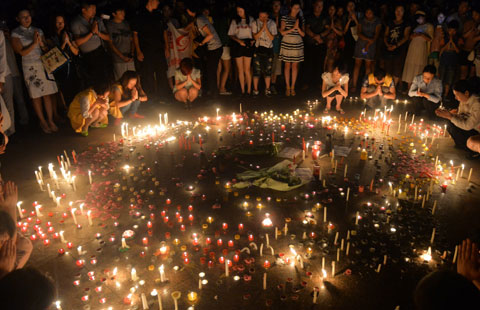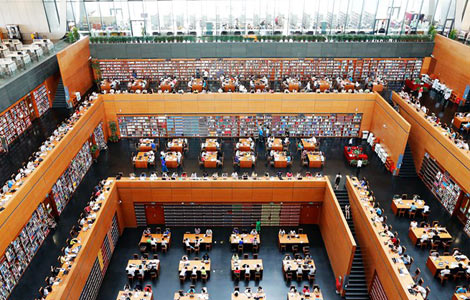Preserving history
Updated: 2014-07-01 07:23
By Wang Kaihao (China Daily)
|
|||||||||||
 |
|
Mogao Caves was added to UNESCO's World Heritage List in 1987. Wang Kaihao / China Daily |
 |
| 47 World Heritage Sites in China |
 |
| World Heritage 2014 |
"When asked 'have any bricks ever fallen from the pagoda?', I confidently replied 'never', but soon found that was inappropriate," he smiles with embarrassment when recalling experiences of receiving UNESCO experts. "Because the follow-up question was 'how can you promise they will not fall in the future?' Apparently, we cannot be too careful when it comes to monitoring heritage. And the work needs to be done more scientifically."
"When we clean the weeds on the pagoda, we also knock the bricks to check if they are loose," Wang says, adding that they generally use old methods to control the number of visitors and monitor the construction safety as well as the surrounding environment of the pagoda. He also explains that daily logs provide important references.
"High-tech devices alone may not help monitoring," says Wang. "But technology will play an increasingly important role if we want to combine efforts from all sides concerned and make full use of the information we have," he adds.
China established its national-level monitoring system in 2013 to better coordinate the country's supervision of heritage sites. According to Zhao Yun, director of the Beijing-based World Heritage Monitoring Center of China, which is affiliated to the Chinese Academy of Cultural Heritage. The center has a format with 17 categories of data to fill.
"We need a database to collect all relevant information overall analysis and to raise any alerts rather than rely on local cultural relic authorities' reports like in the old days," Zhao says China probably leads the world in terms of having national policies and infrastructure to protect World Heritage sites, but it is a late-starter in terms of specific techniques.
A major problem is that a grassroots protector is sometimes unable to tell which information is meaningful, and therefore records useless data, reducing the efficiency of the platform.
"That's why our institution is always ready to offer detailed guidance and criteria," Zhao says, adding that they made a good start."
A uniformed monitoring system which oversees The Grand Canal was set up in 2013. Portions of the world's longest artificial waterway run through eight province-level administrative regions. It made it to the World Heritage list in June.
There are 13 World Heritage sites in China which have been included in the national system, and Zhao expects it to cover all World Heritage sites in China by 2015.
"If everything goes well, we will later consider establishing province-level monitoring systems for those with multiple World Heritage sites, such as Henan and Beijing."
China has 47 UNESCO World Heritage areas, the world's second largest number after Italy.
Related Stories
Ancient bronze vessel reunited with lid in Hunan 2014-06-30 10:46
China's coolest World Heritage sites not to miss 2014-06-26 09:00
Foreigners flock to China's 'porcelain capital' 2014-06-25 07:09
Photos: China's Grand Canal 2014-06-25 07:00
Ancient gov't office of Neixiang county 2014-06-25 07:00
Today's Top News
Flash making emperor 'alive' goes viral
US artist creates lifelike baby animals
Chinese ink paintings shine in France
Anti-virus firms set to lose approved status
Scrawny tiger at Tianjin zoo arouses concerns
Canadian couple 'steal secrets' in China
Ukraine troops seek asylum in Russia
Food scandal hurt McDonald's results
Hot Topics
Lunar probe , China growth forecasts, Emission rules get tougher, China seen through 'colored lens', International board,
Editor's Picks

|

|

|

|

|

|





